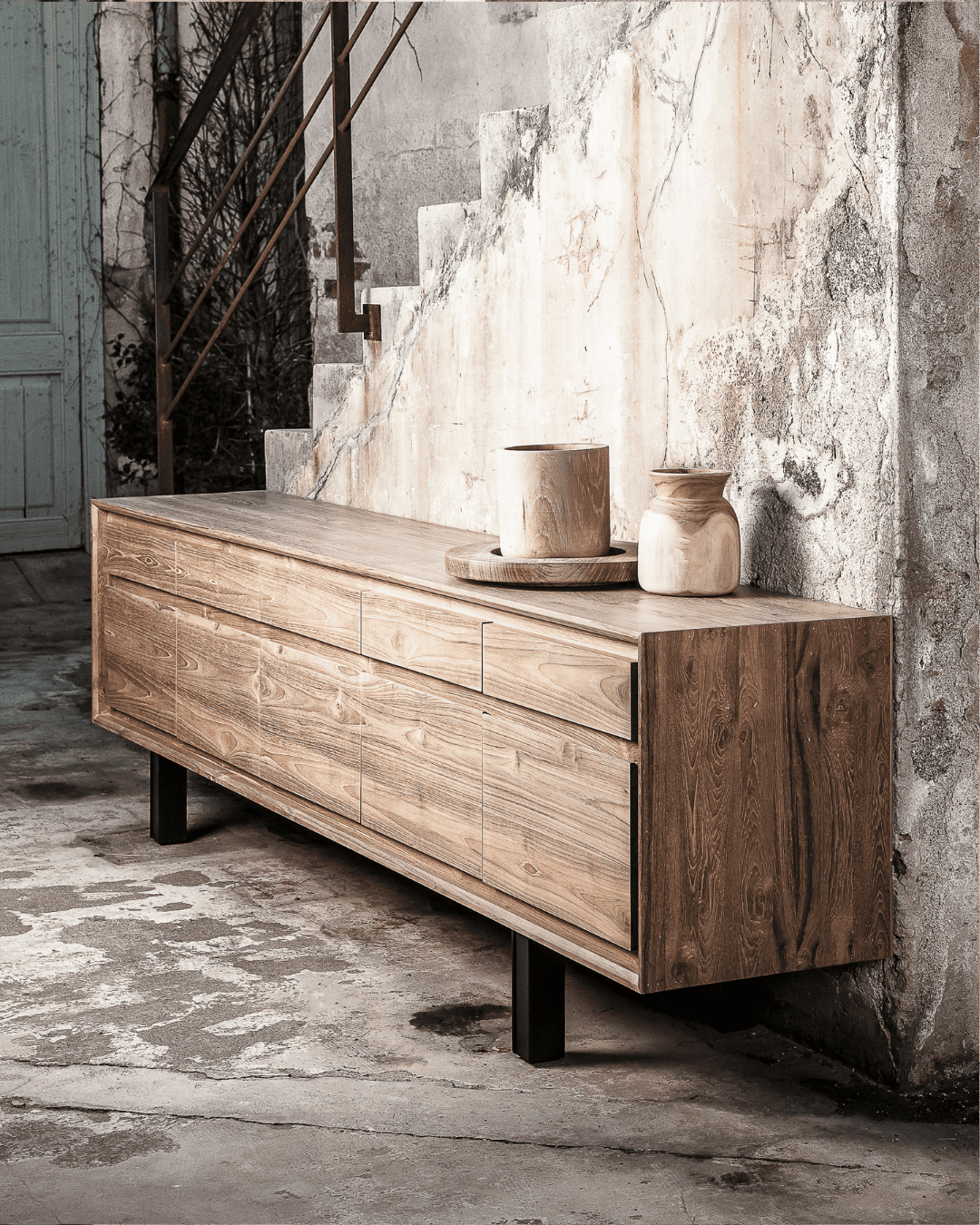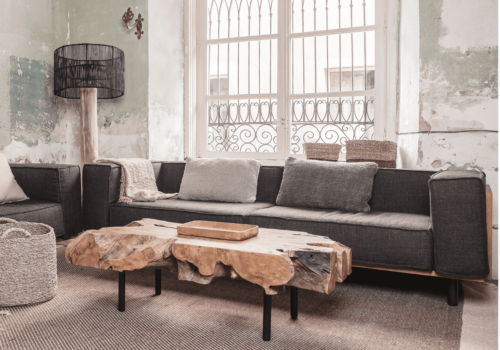El wabi-sabi se define como la belleza que se encuentra en la imperfección, permitiendo una estética más realista y relajada. Pero además viene con una gran carga filosófica y cultural detrás.
¿Qué es el wabi sabi o el estilo wabi-sabi?
El estilo wabi-sabi es la simplificación de la estética natural. Se basa en diseños que abrazan los materiales naturales, con sus texturas, aromas y características más singulares. La traducción literal de las palabras wabi-sabi en japonés, hacen referencia a la soledad en la naturaleza y a la sensación de fragilidad al mismo tiempo, representando un sentimiento de anhelo que acompaña con su pensamiento filosófico del rechazo a la perfección artificial, y la aceptación de los placeres mundanos y naturales de las cosas imperfectas.
Aunque el estilo wabi-sabi se apoya en gran parte en la austeridad, no es esencialmente minimalista, no busca la sensación de vacío, sino simplemente eliminar el ruido de las cosas que no son necesarias. De esta forma, el wabi-sabi busca las piezas esenciales en el día a día, y las mantiene gracias a la calidad y durabilidad de los materiales naturales.
Otro de los puntos de interés del pensamiento que acompaña al wabi-sabi, es el alargar la vida útil de los objetos, y no temer a las grietas ni cicatrices. Las imperfecciones provocadas por el tiempo no dejan de ser una demostración de la existencia de los objetos y de las experiencias vividas. Es por esto que se alienta a la reparación, y reutilización de las cosas.

¿Cómo aplicar el estilo wabi-sabi en casa?
En Dareels nos sentimos orgullosos de identificarnos en este estilo y el modo de vida que lo acompaña, por esto, proponemos los puntos esenciales para empezar con el wabi-sabi
- Eliminar el ruido visual. Esto centrará la visión a los puntos de cada estancia que más interesen. No solo en el estilo wabi-sabi, cualquier otro que se base en la armonía, elegancia o calidad, pasará por este paso.
- Utilización de materiales naturales. Otro de los puntos clave principales es el de prestar especial atención a los materiales que ocupa la decoración de nuestro hogar, priorizando siempre los naturales, y dentro de estos, los sostenibles y reciclados.
- Recordar el valor de la artesanía. El wabisabi acepta y abraza la belleza que existe en la imperfección de las cosas hechas a mano. Todas las piezas de Dareels son de fabricación artesanal.
- Textiles naturales. Los textiles no son una excepcitón dentro de la elección de materiales. Los que más encajan son aquellos cargados de textura, y se encuentra la belleza incluso en las arrugas de los mismos.
- Usar una paleta de colores neutros. Al ser una visión naturalista y simplificada a lo esencial, los colores más llamativos y artificiales no encajan, y aquellos que se encuentran con facilidad en la naturaleza serán perfectos.
- Paredes liberadas. La simplicidad también se aplica en la decoración vertical. Las paredes esencialmente blancas o beige, no se cargarán de decoraciones, salvo algún detalle puntual y realmente significativo.
- Las plantas son bienvenidas. La decoración con plantas es un must dentro de este estilo. ¿Qué mejor forma hay de incluir la naturaleza en un espacio, que dándole vida?
- Fibras vegetales. El cáñamo, el ratán y el seagrass son grandes aliados, combinan el punto de la textura, los materiales naturales y el valor de la artesanía, todo en uno.
- Aromaterapia. La sensación final que busca este estilo es la de la libertad y la paz mental. Esto se hace más fácil de conseguir en un ambiente que aporte un aroma natural, cálido y relajante. Brillando en su mayor forma con unas velas aromáticas, y la gran estrella: el incienso.







